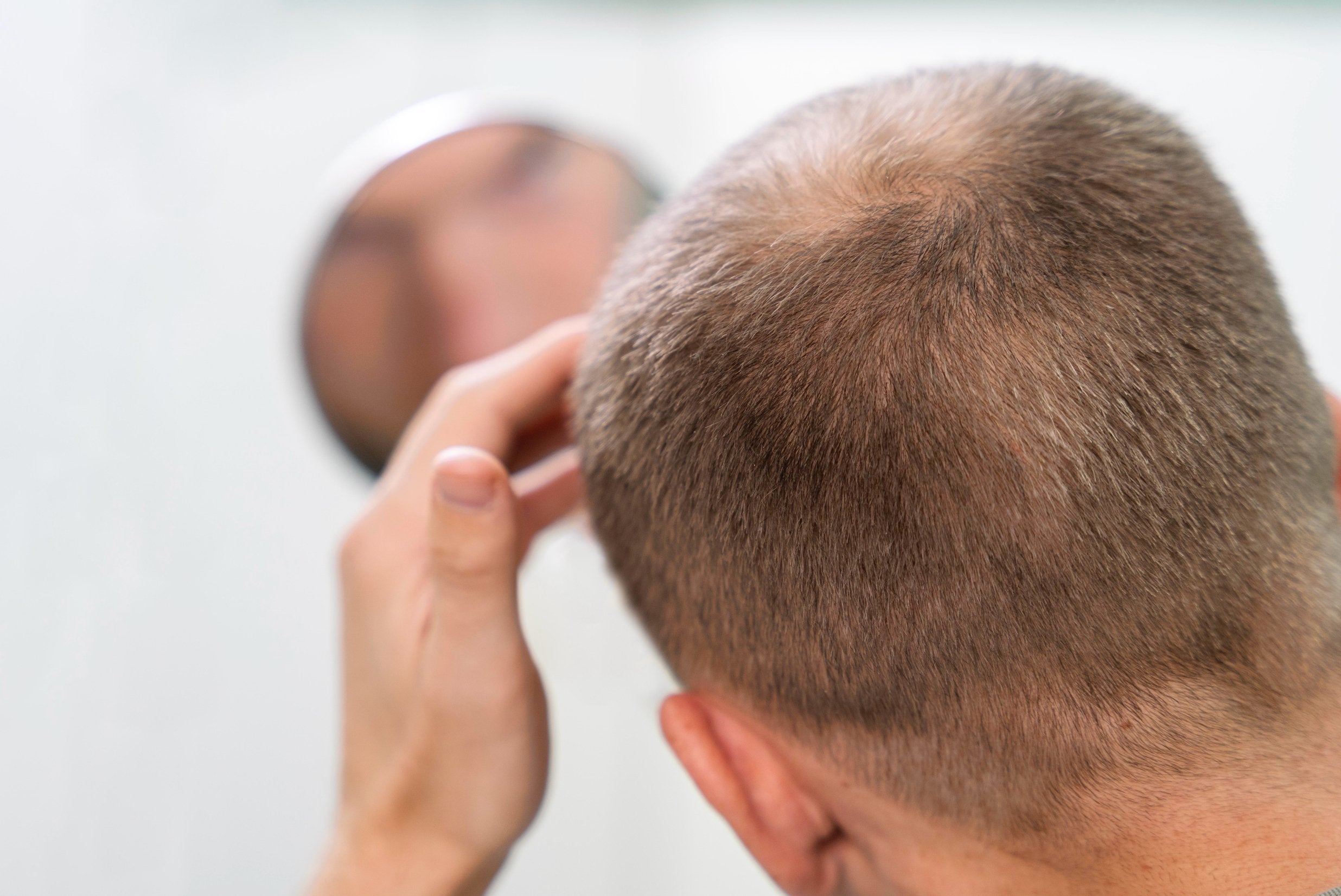Welcome back to our Hair Loss 101 series, where we unravel the mysteries of hair loss, one strand at a time! Today, we're starting at the root of the problem – quite literally. Let's talk about DHT, the secret saboteur behind hair loss.
Summary |
|
1. What is DHT?
Dihydrotestosterone, or DHT, sounds like something from a science fiction movie, but it's very much a reality for many experiencing hair loss. This powerful androgen hormone, derived from testosterone, plays a crucial role in bodily development. However, when it comes to your hair, it's more of a villain than a hero.
2. DHT and Hair Loss: The Connection
During puberty, DHT is like the helpful friend guiding you into adulthood. But as you age, this friend can turn foe, especially for your hair. DHT binds to hair follicles and, over time, weakens them, leading to what's known as follicular miniaturisation. This process is the primary cause of male pattern baldness, or Androgenetic Alopecia.
3. The Patterns of DHT-Induced Hair Loss
DHT doesn't spread its mischief evenly. It typically targets hair follicles around the temples and crown, leading to the classic receding hairline and the classic 'bald spot'. Recognizing these patterns early can be key in tackling hair loss effectively.
4. Can You Block DHT?
Here's the million-dollar question: Can you stop DHT from wreaking havoc on your scalp? The answer lies in treatments that reduce DHT levels or prevent it from binding to hair follicles. These treatments range from over-the-counter options to prescription medications. But remember, it's not a one-size-fits-all solution.
5. Lifestyle and DHT: Is There a Link?
Lifestyle factors like diet, exercise, and stress can influence DHT levels and your overall hair health. While changing your lifestyle alone might not banish DHT, it can be part of a holistic approach to managing hair loss.
6. The Gro Clinics Approach to DHT and Hair Loss
At Gro Clinics, we understand the science behind DHT and hair loss. Our approach is to provide tailored solutions that address this hormone’s impact on your scalp. From advanced treatments to lifestyle advice, we've got your back (and your head!).
DHT might be a key player in hair loss, but it doesn't have to be the end of your hair story. Understanding how it works is the first step in combating its effects. Stay tuned for more in our Hair Loss 101 series, where we'll dive deeper into treatments, lifestyle tips, and everything hair-related. Remember, at Gro Clinics, we're not just fighting hair loss; we're nurturing hair revival.
Ready to take the next step? We have clinics all around Australia and New Zealand including Brisbane, Gold Coast, Sydney, Melbourne & Perth.
Why not give us a call on 1300 787 563 to start your hair growth journey.









